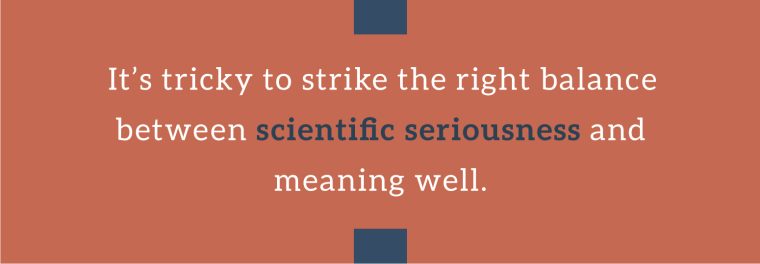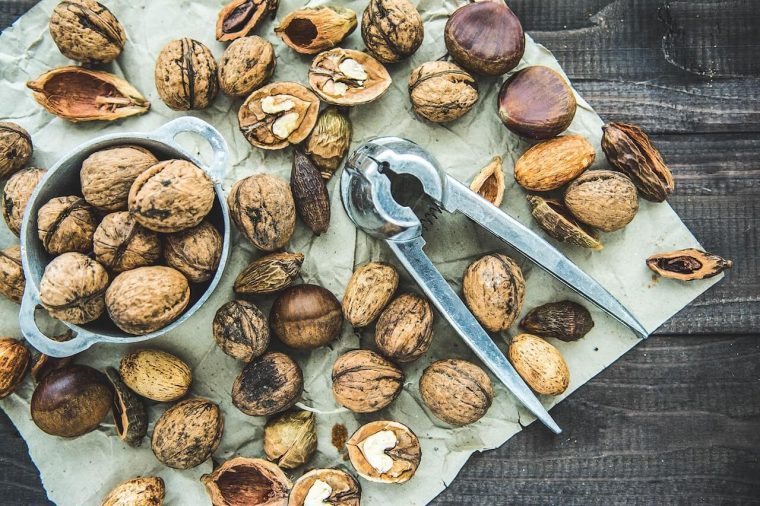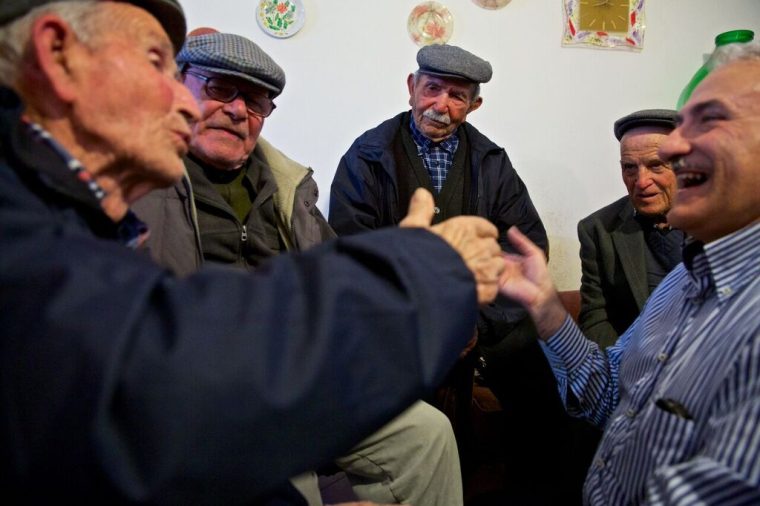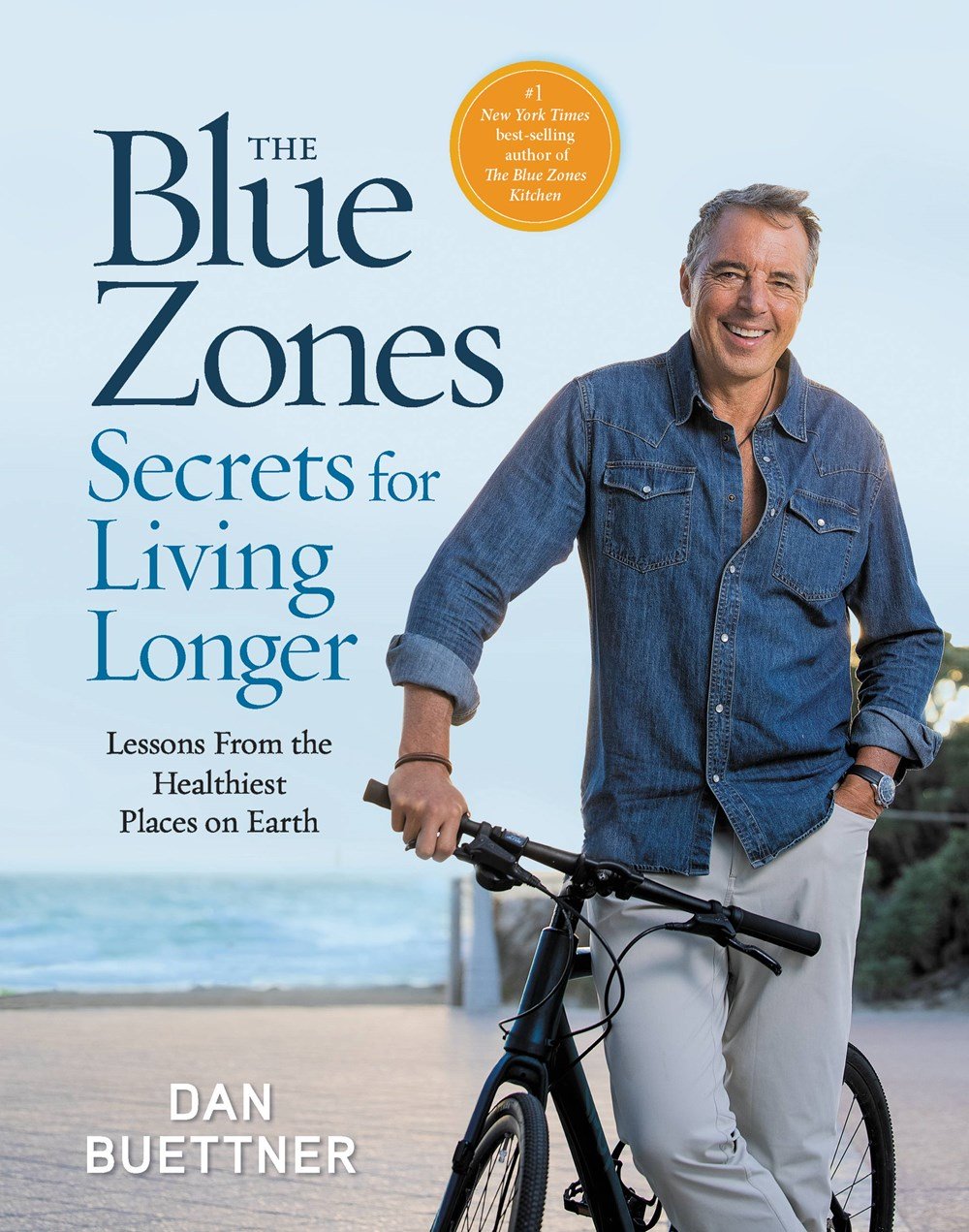As much as I hate to admit it, I don’t think it’s possible to write about health, wellness, and longevity in the 21st century without sounding a little preachy sometimes.
That’s never my goal. I’m a common-sense Midwesterner at heart; I feel incredibly lucky to have had the opportunities I’ve had in my career, and I therefore feel obliged to share what I’ve learned with the rest of the world. But…

I say so because…
- I have to be aware that the information I’m sharing is not common knowledge, but I also have to make it clear without being patronizing or pedantic.
- I have to impart the seriousness of the problems without scaring people into shock or resignation.
- I have to encourage people to re-examine or even change certain aspects of their lives without judging them or making them feel bad about themselves.
- I have to point out where the blame lies for certain bigger problems without letting people off the hook of responsibility for their own health.
Today’s main topic—aspartame—is a good example of this idea in action, since all four of the above examples are true in this case. Hopefully I’ve managed to strike the right balance today!
What I don’t want, in this or any other edition of Eating to 100, is to talk about our collective health problems like I’m the only person on the Titanic who realizes that it’s sinking. It’s worth noting that some of our collective health concerns, no matter how daunting or frustrating, usually came about for mundane, relatable human reasons; in fact, a lot of them (including aspartame) started out looking like good ideas, and we just didn’t know what we didn’t know.
So before I start to break the ice on our aspartame problems, I’ll give a little credit where it’s due:
- Sugar-free drinks have always been a really good idea. Water is best, of course, but it’s a big win-win to be able to hydrate AND enjoy the taste of your drink—and with artificial sweeteners, you can even enjoy a sweet-tasting drink without all of the calories sugar would add. This is possible because…
- Artificial sweeteners create a really clever “loophole” whereby you enjoy sugar-like sweetness without all the calories from actual sugar. Pound for pound, aspartame and table sugar contain about the same number of calories—but because aspartame is about 200x sweeter than sugar, you only need a tiny amount (a fraction of a calorie’s worth) to mimic sugar’s sweetness, and this is what makes “diet” drinks as we know them possible.
- We therefore shouldn’t be too surprised that sugar-free beverages are such popular options, particularly in America where regulatory bodies like the FDA have insisted for decades that artificial sweeteners like aspartame are perfectly safe. They’ve allowed us to have our cake and eat it too (so to speak).
If you’ve ever thought to yourself that diet soda’s proposition might sound a little too good to be true… well, you might’ve been right. That’s where the evidence is beginning to point, and we’ll crack open those details in a moment.
But first..

I’ve talked a lot about the West’s insatiable sweet tooth, how many of our health problems tie back to our overconsumption of sugar—so, thus far in Eating to 100, my general attitude about sugar substitutes has been “they can’t be awesome for you, but they’re probably better than the mountains of sugar they’re replacing.”
I’m not totally going back on that attitude, but I am going to have to complicate it today by sharing some of the latest news on sugar substitutes—aspartame in particular. Diet Coke drinkers of the world, beware!
If you don’t know, aspartame is one of about a half-dozen artificial sweeteners in use in our food supply. It’s immensely popular because of its relatively low cost and its sweetness profile; it comes closest to table sugar without a bitter aftertaste like you get from saccharin (the “original” artificial sweetener). It’s used in thousands of different food products, though we consume the majority of our aspartame by way of diet soda pop.
You might’ve seen headlines recently like this one from the New York Times:
Aspartame Is a Possible Cause of Cancer in Humans, a W.H.O. Agency Says
My main task for today is to unpack this news and tell you what’s really going on. I won’t be able to cover everything I’d want you to know about aspartame and its regulation, but I’ll cover the essential info and then come back to more details in a later edition(s) of Eating to 100.
Here in America, the FDA weighed in on aspartame decades ago (mostly to approve it for use) and has largely stuck to its guns ever since. The vast majority of Americans don’t know that it’s one of the more controversial FDA approvals in history, that the scientific community has objected at pretty much every turn—and so, collectively, we’ve come to assume that it’s safe in the quantities we’re consuming, even as we’re consuming more and more of it in our attempts to get away from sugar.
If this latest round of aspartame headlines seemed a bit louder and a bit more serious than others before it, that’s because there’s finally an official voice of dissent. To be more specific: the IARC (basically the cancer-research wing of the WHO) weighed in on aspartame for the first time and, unlike the FDA, they did NOT say that aspartame was perfectly harmless and safe. In fact, their official determination was that aspartame is “possibly carcinogenic.”
To contextualize that, the IARC classifies substances into four potential groups:
Group 1 is “highest confidence,” meaning that the evidence linking a substance to cancer risk is strong and definitive. Substances in this group include tobacco, alcohol, and sunlight.
Group 2A is “probably carcinogenic,” meaning that the research into a given substance strongly and consistently suggests a cancer risk. If you remember the infamous pesticide DDT, that’s an example of a substance in Group 2A.
Group 2B is “possibly carcinogenic,” which basically means that the evidence points seriously (but not yet definitively) to a cancer risk. Aspartame is here in this group, along with most of the substances the IARC has ever reviewed.
Group 3 substances are safe, meaning that there is little to no serious scientific evidence that the substance is associated with cancer risk. Coffee falls into Group 3 (and thank God for that).
It might not seem terribly dramatic for the IARC to put aspartame in Group 2B, but here’s why this is a big deal in five simplified pieces…
1️⃣ They certainly didn’t put aspartame in Group 3. In other words, the IARC decided, from their very first judgment on the matter, that aspartame was not definitively safe—and this is bound to be controversial news to a population of people like ourselves who consume it with reckless abandon. The bigger implication here is that aspartame is probably waiting to be proven hazardous, rather than waiting to be proven safe (more on that in a bit).
2️⃣ The differences between IARC groupings have massive ramifications. The first and most obvious ramification is upon our health, since we’re talking about cancer risks here. This whole aspartame thing wouldn’t be news at all unless cancer were a big deal, and of course it is.
But then there are also the political, economic, and social ramifications to consider. Aspartame is an important cog in a number of big-business machines (like Coke and Pepsi), and even seemingly minor judgments about the strength of evidence linking aspartame to cancer are liable to cause billion-dollar levels of fallout for those businesses—who, in turn, are liable to set off some lobbying and PR firestorms.
The IARC knew, in other words, that things could get ugly even with a mild-looking 2B classification—and this was surely part of the reason they stuck with the more conservative grouping for now. On that note…
3️⃣ The IARC erred on the conservative side by putting aspartame in Group 2B. In other words: had the IARC felt particularly bold and brazen, they could have made a case for classifying aspartame in Group 2A. Clearly they were not feeling so bold (and the IARC tends to be very conservative with their classifications anyway), but it’s worth repeating that their wish to avoid a “thermonuclear” situation was a bias against the facts, not towards them. The IARC was, in other words, pulling its punches on purpose.
You can read a more thorough analysis of the news and evidence here. This document comes from my good friend Dr. B the Gut Health MD, and—though he ultimately agrees that the 2B classification is appropriate—he also explains why it could be considered timid in light of the available evidence.
4️⃣ The IARC’s decision to put aspartame in Group 2B is by no means final or definitive. It reflects the strength of scientific evidence as it currently stands, which means it can change later. Without getting into the full technical details, the IARC’s job is not to determine the risk (think “probability”) that a substance will give you cancer. Instead, its job is to assess the strength of evidence (think “credibility” or “scientific rigor”) of research pointing to any degree of cancer risk.
In other words, the IARC isn’t saying “we think aspartame poses a small risk (and only a small risk) of cancer.” They’re saying “we can’t say exactly how much risk aspartame poses, but the evidence is piling up in a way we have to start taking seriously.”
My money says that aspartame’s stock is only going to drop from here on out—that it’s not going to be “exonerated” from this situation in the future, but sink deeper as the evidence accumulates.
5️⃣ The conflict between the FDA (“aspartame is safe”) and the IARC (“it might be carcinogenic”) helps to illuminate one of America’s biggest regulatory flaws: it’s easy to get a substance approved, but hard to get it blackballed after that. This isn’t just a problem of inflexible bureaucracy. As I’ll have to explain more later, there’s a serious lack of transparency between regulatory bodies like the FDA and the people it’s meant to serve (us).
There’s also a serious lack of scientific discernment. As Dr. B notes in his aspartame breakdown, many of aspartame’s lobbying interests are quick to dismiss new research with the generic label “not convincing” even when scientists at large find the evidence highly convincing. When pressed for evidence of their own, many of those aspartame defenders reflexively point to a single rat study from the mid-‘70s, even though the research is almost 50 years old now (and even though we’re humans, not rats).
It’s worth remembering, too, that this whole kerfuffle is about cancer specifically, with no mention of all the science drawing links between (say) aspartame and changes in the gut microbiome, such as increased insulin resistance. Cancer, in other words, is only one part of aspartame’s risk profile.
In closing for now, I’ll just return to what I’ve studied myself and tell you this much: you don’t see centenarians drinking Diet Coke in the blue zones. Soda pop and diet soda pop do exist there, but not on every street corner or in large quantities… and maybe this should be a clue for us.
I do agree that diet beverages are still the lesser of two dietary evils (because we have such big sugar problems), but the rising tide of evidence should suggest that aspartame is still a sort of dietary evil—something that we should avoid if we want to live the longest, healthiest lives we can. More details to come in future editions!

I was taking a look through the Eating to 100 archive recently and I noticed that there’s an idea I’ve caught myself expressing more and more.
The idea is usually phrased something like so: that the blue zones’ path to health and longevity is “twisted by paradoxes.”
That’s the best shorthand I’ve got for the idea in my head, and I think it’s an important idea, but I do realize that any mention of “paradoxes” can seem a bit pretentious. So let me say this: I never want to make the information in this newsletter any more complicated than it has to be. Details do matter, but the basic truth of things is usually pretty straightforward and I feel a certain duty to report it that way.
Having said that, maybe you’ll understand better that, when I point out what’s paradoxical about the blue zones, I’m not trying to be fancy or invent clever things out of thin air. I’m trying to tell you exactly what I’m already seeing in the hope that you’ll be able to see it, too.

For example: if a fact seems unbelievable despite being true, or if two facts seem to contradict one another but actually don’t, that information can be just as important as the facts themselves (because you’d be likely to dismiss the facts without it).
The blue zones exemplify the idea that truths are stranger than fictions, even when the truths are relatively simple. So here’s a quick review of six blue-zone paradoxes I’ve already covered in Eating to 100 (three large and three small), with links for further reading to get your brain stretched and ready for maximum comprehension:
1️⃣ We fixate on choices and willpower, assuming that they’re the keys to health and longevity, when our environment actually makes the bigger difference. This theme persists throughout my work because, in many ways, this is the blue zones’ first and biggest lesson for us. The blue zones are not regular places where exceptional people live to 100; they’re exceptional places where regular people live to 100, and it’s worth stopping to think about this distinction for a moment.
This is great news because it means we can learn how to help our environments to help us, rather than trying to white-knuckle our way through a world that often seems hostile to healthy habits. Controlling your choices is well and good, but controlling your options is both easier and more important in the grand scheme of things.
There’s no one edition of Eating to 100 where I’ve unpacked this theme—it appears here, there, and a little bit of everywhere—and it’s worth noting that the term “environment” can encompass everything from your social network to your immediate physical surroundings. Here’s the whole archive of Eating to 100 if you want to browse previous editions.
2️⃣ The people who actually live to 100 don’t set out trying to live to 100. They just… do. This is one of the riddles that I tried to tackle in Edition 11, where I first called attention to the ways in which blue-zone health and longevity are paradoxical.
This idea can be frustrating at first (it’s like being told “you can hit the bullseye, but never by aiming for it”), but eventually it helps you see clearly why personal purpose and living well are so important to centenarians. The people who live to 100 are the people who have the heart for it, both literally and figuratively!
Also in Edition 11, I explain the whole “how to hit a bullseye without aiming for it” riddle using an analogy I call the Karate Paradox. If you can picture a karate student breaking a wooden board with a straight punch, you already understand more than you realize about your life and purpose.
3️⃣ The same dietary instincts that helped us to survive for eons are now among the deadliest killers in the developed world. When all food was natural and all technology primitive, our love of calories (combined with our fat storage system) helped us to survive periods of difficulty and uncertainty. But nowadays—when our food is both abundant AND far more energy-dense than foods found in nature—it’s all too easy for those “caveman instincts” to get us hooked on stuff we don’t need. After all, the very same things that make junk foods “bad” are the reasons we enjoy them!
Corollary: Refined sugar has a unique ability to get into our heads figuratively (e.g. cravings) because it also has a unique ability to get into our heads literally (by crossing the blood-brain barrier).
4️⃣ Alliums like garlic and onions are so good for you that they might as well be magical… yet the Greek root of the word allium means “to avoid.” Our best guess is that alliums’ name was chosen to reflect their pungent odors, which weren’t as popular back then as they are today. But taste preferences aside, you definitely should NOT avoid alliums, because they’re among the healthiest things you can eat; chopping or crushing them creates a compound called allicin which has antibacterial, antiviral, antifungal, and even cancer-fighting properties.
5️⃣ Cast-iron cookware has become more popular in recent years, even though it’s avowedly anti-modern. It’s crude, it’s heavy, it’s slow to warm up, it doesn’t have heat-resistant handles, and it’ll rust if you leave it in the sink—and yet, in the year 2023, a lot of people are still VERY enthusiastic about cooking with cast iron. It turns out that some of the same properties that make it “backward” also make it uniquely useful in the kitchen.
6️⃣ In the kitchen, a sharp knife is safer than a dull knife. It’s true, and you can ask anyone who’s ever worked in a restaurant kitchen. The general idea is that a sharp knife, while theoretically able to wound you worse, also makes knife accidents less likely to happen in the first place. Don’t forget to sharpen those blades from time to time!

Instant Pot One-Pot Pasta with Cherry Tomatoes and Basil

Ingredients
1 tablespoon extra virgin olive oil (optional), plus more to serve
1 small yellow onion, diced
4 cloves garlic, sliced
¼ teaspoon red pepper flakes
1 lb (450g) uncooked short pasta (such as penne, fusilli, or bowtie)
1 teaspoon sea salt
4–5 cups water
1 pint (551ml) cherry tomatoes
1 bunch fresh basil, torn or sliced
¼ cup drained capers
1 cup shredded vegan Parmesan cheese, freshly ground
The Method
- On the Instant Pot, select Sauté (Medium), and heat the oil, if using, in the inner pot until hot. (Otherwise, you can dry sauté in the hot pot or add a bit of water in the bottom of the pot.) Add the onion and sauté until softened and golden, 3 to 5 minutes. Add the garlic and pepper and sauté 1 minute longer. Press Cancel.
- Add the pasta to the inner pot of the Instant Pot. Add the salt and water until just covered, no more than ¼ inch (0.5cm) above the pasta. Add the tomatoes on top without stirring.
- Lock the lid of the Instant Pot and ensure the steam release valve is set to the sealing position. Select Pressure Cook (Low), and set the cook time for half of the cook time on the pasta package, rounding down. For example, if the pasta package calls for 10 to 12 minutes on the stove, set the cook time for 5 minutes.
- Once the cook time is complete, immediately quick release the pressure and carefully remove the lid. Add the fresh basil and capers, and stir to combine. Drizzle with a little olive oil, if desired. Serve immediately with Parmesan and salt and pepper, to taste.
Tip: If you’re craving more protein, you can stir in a cup of cooked chickpeas or cannellini beans or serve with grilled vegan Italian sausage. If you love greens, wilt in a few handfuls of arugula or spinach at the end.





